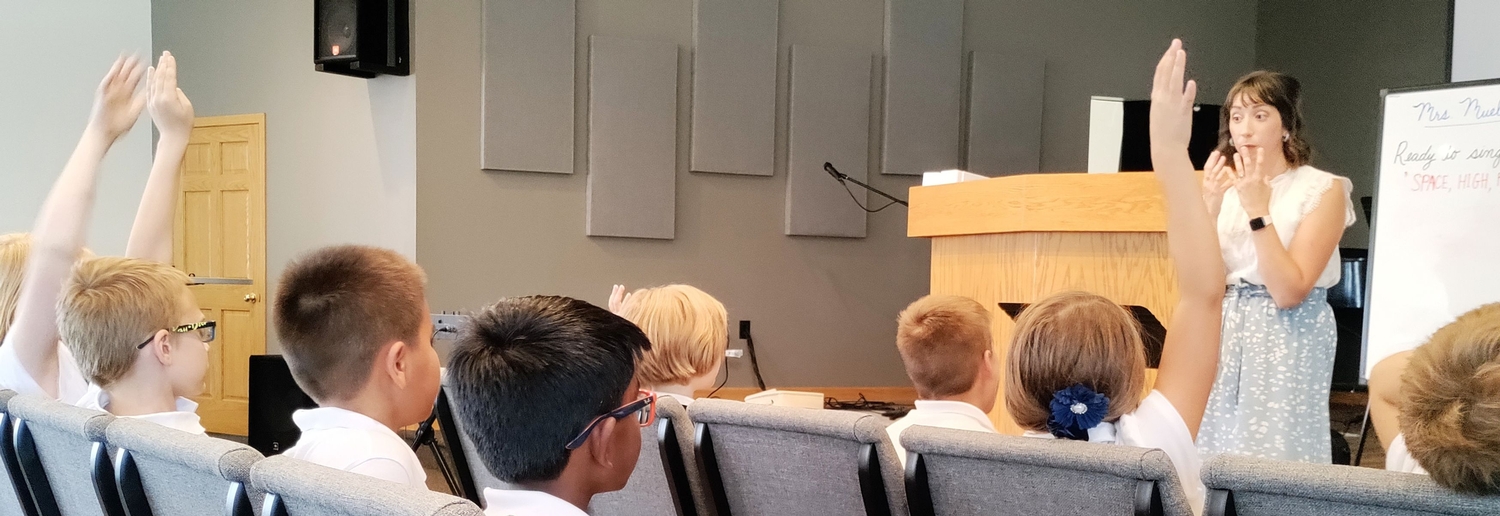 Wycliffe School
Wycliffe School
Our church has many skilled in the common and fine arts and we intend to use and incorporate the mastery of their crafts into our student's lives both in and outside of the school day. The curriculum will integrate some of the common and fine arts into other areas of study, develop extra-curricular programs, and encourage students to learn these valuable skills from family, family friends, and the church family. However, we must make sure that they in no way distract us from the core of our curriculum.
The Common and Fine Arts
A K-12 classical Christian curriculum may retain the teaching of common arts (technical skills/trades) in order to serve a higher good (serving the community); it does not however seek to train in specific skills for the sake of employment. Vocational training is truly good, but it serves higher goods and without a humane education one may lack the qualities which distinguish man from beast. This is why such skills are sometimes negatively labeled the "servile arts". Historically, without the liberating arts, one is subject to masters, employers, or the will of leaders who were able to read, write, think, speak, and calculate strategically.
The young man who is taught to fear the Lord, seek wisdom, and live virtuously while being able to read, think, write, and speak well, is no less suited for an apprenticeship or technical college than 12th graders whose entire education prioritized test taking and vocational training while withholding the nourishment of truth, goodness, and beauty from their souls. John Amos Comenius (1592-1670) shares similar sentiments as he describes the importance of educating youth in all areas of life, “In short, the purpose for which youth ought to be educated is threefold: Faith and Reverence; Uprightness in Morals, Knowledge of Language and Arts. These are to be taken however, in the precise order in which they here appear, and not inversely…”[1] The priority is to order the affections toward God for, “To be human is to love, and it is what we love that defines who we are.[2]
The fine arts, are in a similar position as the common arts in the curriculum. The fine arts are the fruit of the liberal arts’ use of common arts (which again, emphasizes the importance of the liberal arts).[3] Though not the center of the curriculum, the fine arts are related to the formative nature and the liberal art of music; they should be integrated inside and encouraged outside the curriculum where possible.
More thought on integrating the common and fine arts does need to take place but providing an extensive education in each of these areas would be overwhelming and students would gain mastery over nothing; it may be within reach of boarding schools but with a biblical understanding of the family and the local church, the school must not consume the child’s life. Yet, one can easily see how a class dedicated to the fine art of realism drawing may be used to benefit one's study in natural science through accurate nature sketch books, or how learning architecture and plumbing techniques may be used in a history lesson on Rome’s aqueducts or city planning. In the future, we will attempt integration by requiring all students to contribute to an annual school play or musical, incorporating both the common and fine arts through participating in stage crew and/or the performance. We also accomplish integration with the common art of armament/hunting in our P.E. program (knowledge of combatives, weaponry, marksmanship, and tracking).
Notes:
[1] D. Bruce Lockerbie, A Passion for Learning: A History of Christian Thought on Education (Colorado Springs, CO: Purposeful Design Publications, 2007), 180-81.
[2] James K.A. Smith, Desiring the Kingdom: Worship, Worldview, and Cultural Formation (Grand Rapids, MI: Baker Academic, 2009), 51.
[3] Clark and Jain, The Liberal Arts Tradition, 251-53.
